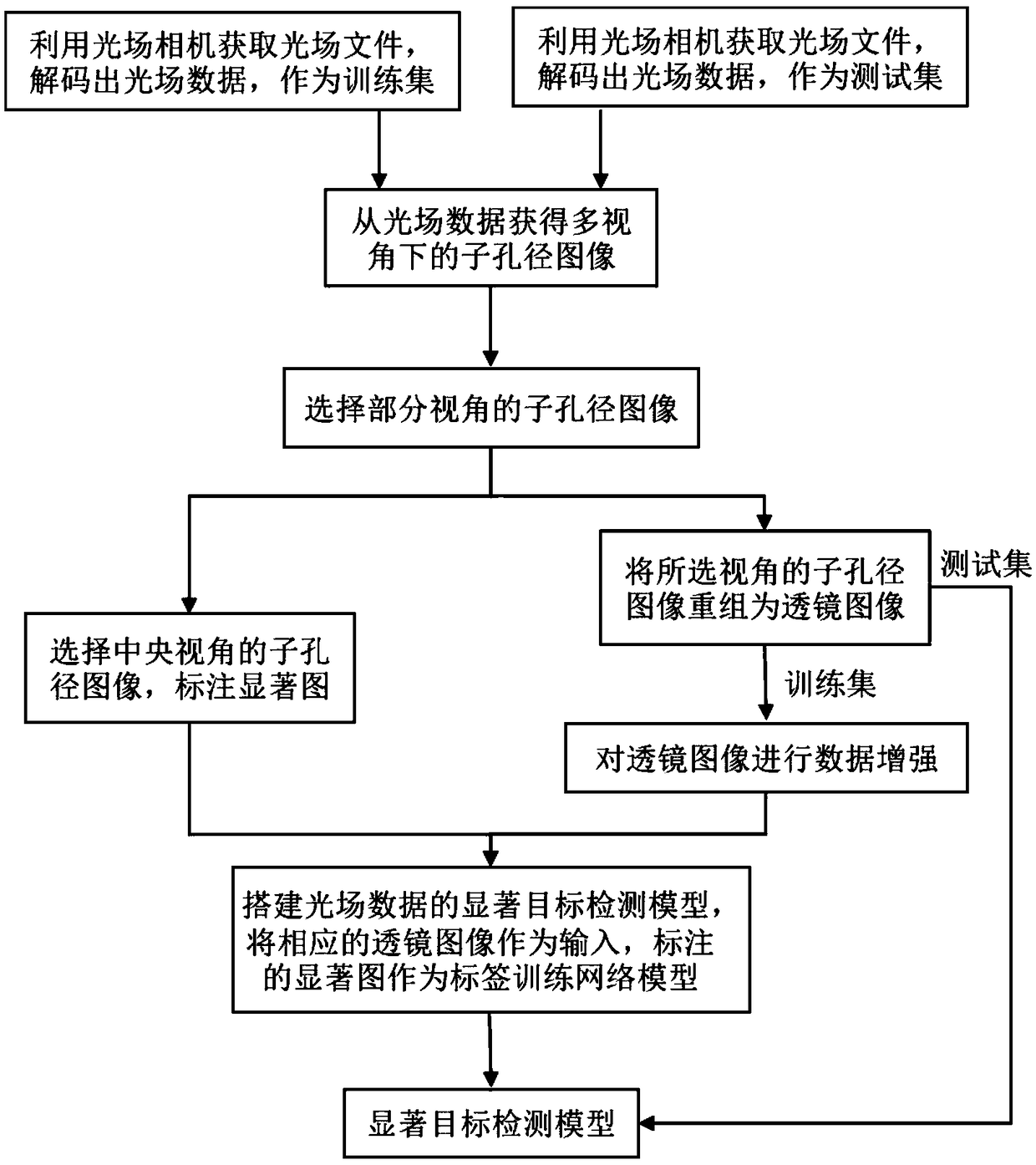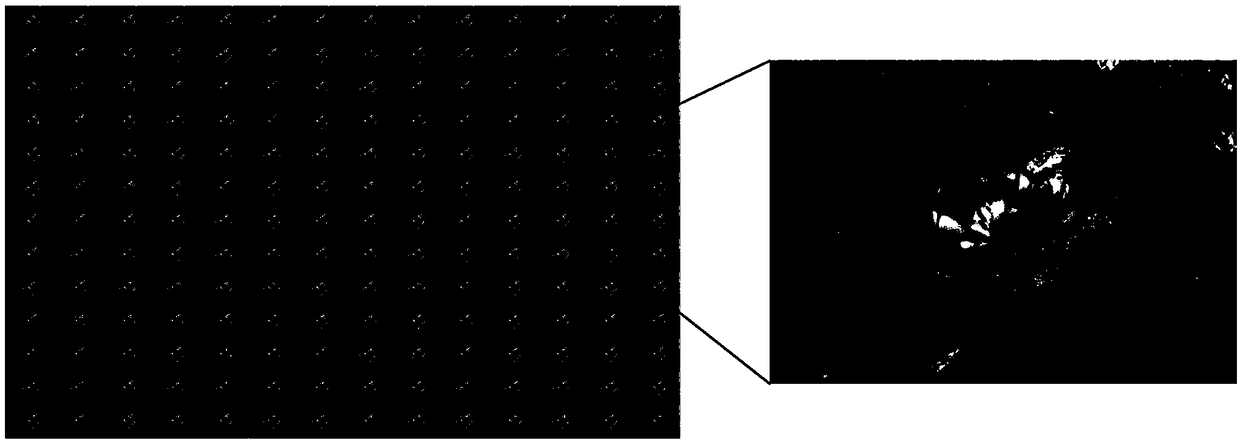A salient object detection method in optical field based on depth convolution network is proposed
A technology of deep convolution and target detection, applied in biological neural network models, instruments, character and pattern recognition, etc., can solve problems such as lack of comprehensive consideration of complementarity, poor robust detection effect, and insufficient feature expression. Achieve the effect of overcoming the independent processing of depth and color information, taking into account depth perception and visual salience, and improving accuracy and robustness
- Summary
- Abstract
- Description
- Claims
- Application Information
AI Technical Summary
Problems solved by technology
Method used
Image
Examples
Embodiment Construction
[0050] In this embodiment, a light field salient target detection method based on deep convolutional network, its flow chart is as follows figure 1 shown, and proceed as follows:
[0051] Step 1, obtain microlens image I d ;
[0052] Step 1.1, use the light field device to obtain the light field file, and decode it to obtain the light field data set as L=(L 1 , L 2 ,...,L d ,...,L D ), where L d Indicates the dth light field data, and denote the dth light field data as L d (u, v, s, t), u and v represent any horizontal pixel and vertical pixel in spatial information, s and t represent any horizontal viewing angle and vertical viewing angle in viewing angle information; d∈[1,D], D represents the total number of light field data;
[0053] In this embodiment, the second-generation light field camera is used to obtain the light field file, and the lytro powertoolbeta tool is used to decode the light field file to obtain the light field data L d (u, v, s, t); light field d...
PUM
 Login to View More
Login to View More Abstract
Description
Claims
Application Information
 Login to View More
Login to View More - R&D Engineer
- R&D Manager
- IP Professional
- Industry Leading Data Capabilities
- Powerful AI technology
- Patent DNA Extraction
Browse by: Latest US Patents, China's latest patents, Technical Efficacy Thesaurus, Application Domain, Technology Topic, Popular Technical Reports.
© 2024 PatSnap. All rights reserved.Legal|Privacy policy|Modern Slavery Act Transparency Statement|Sitemap|About US| Contact US: help@patsnap.com










